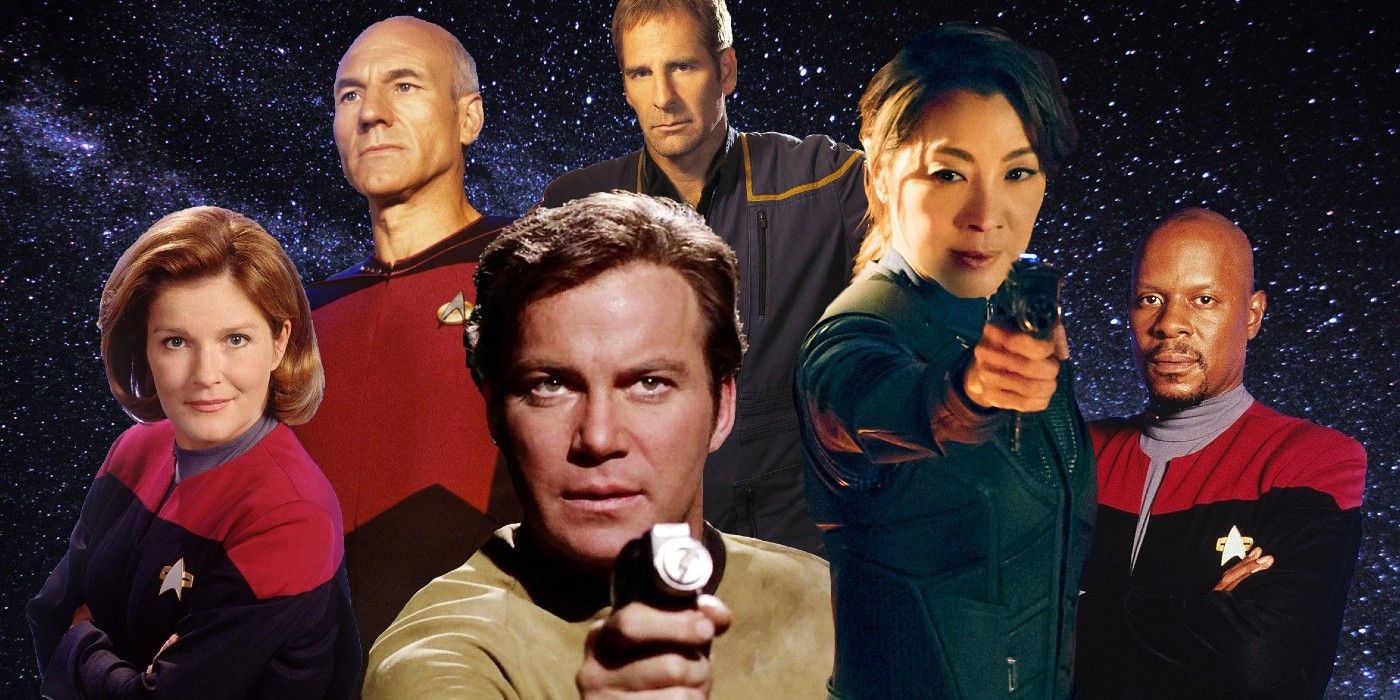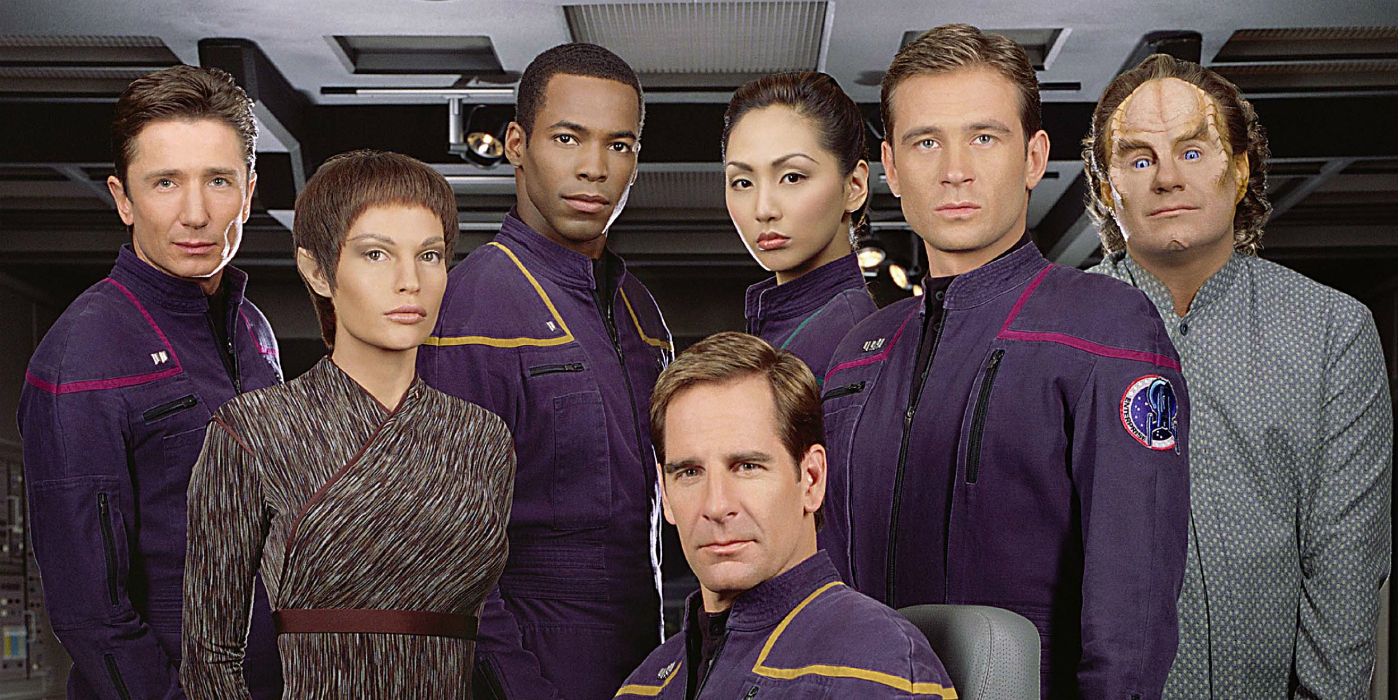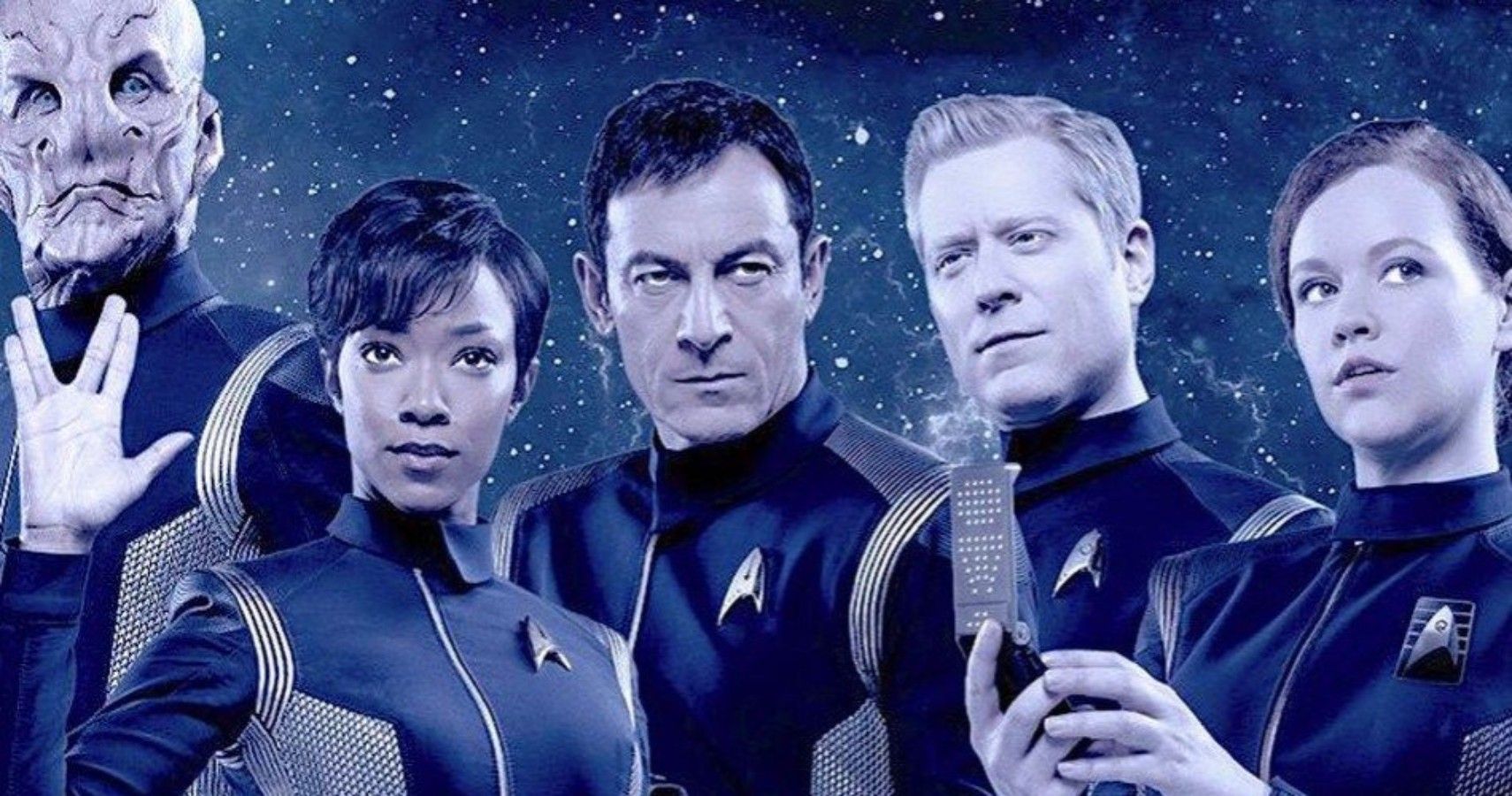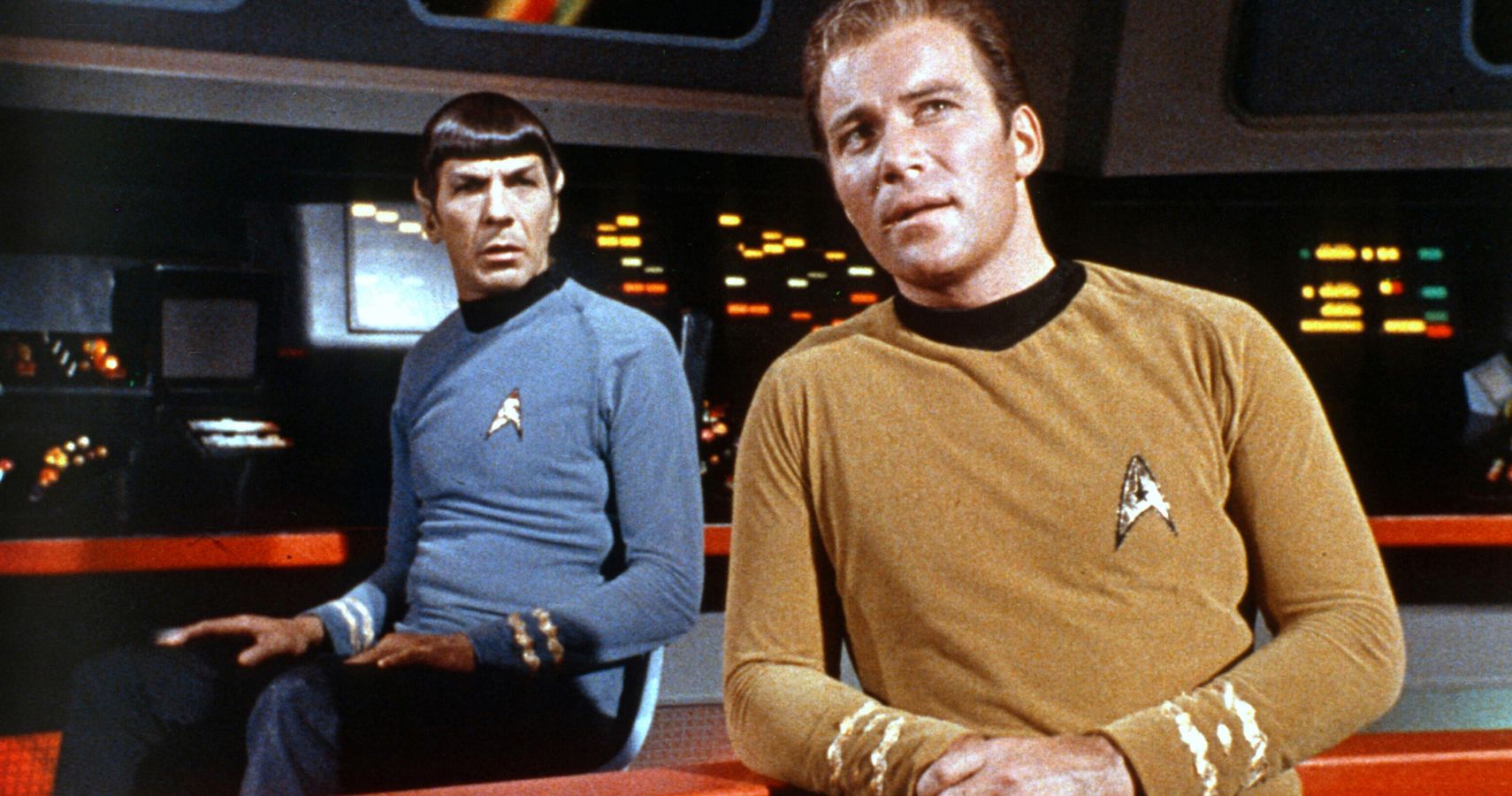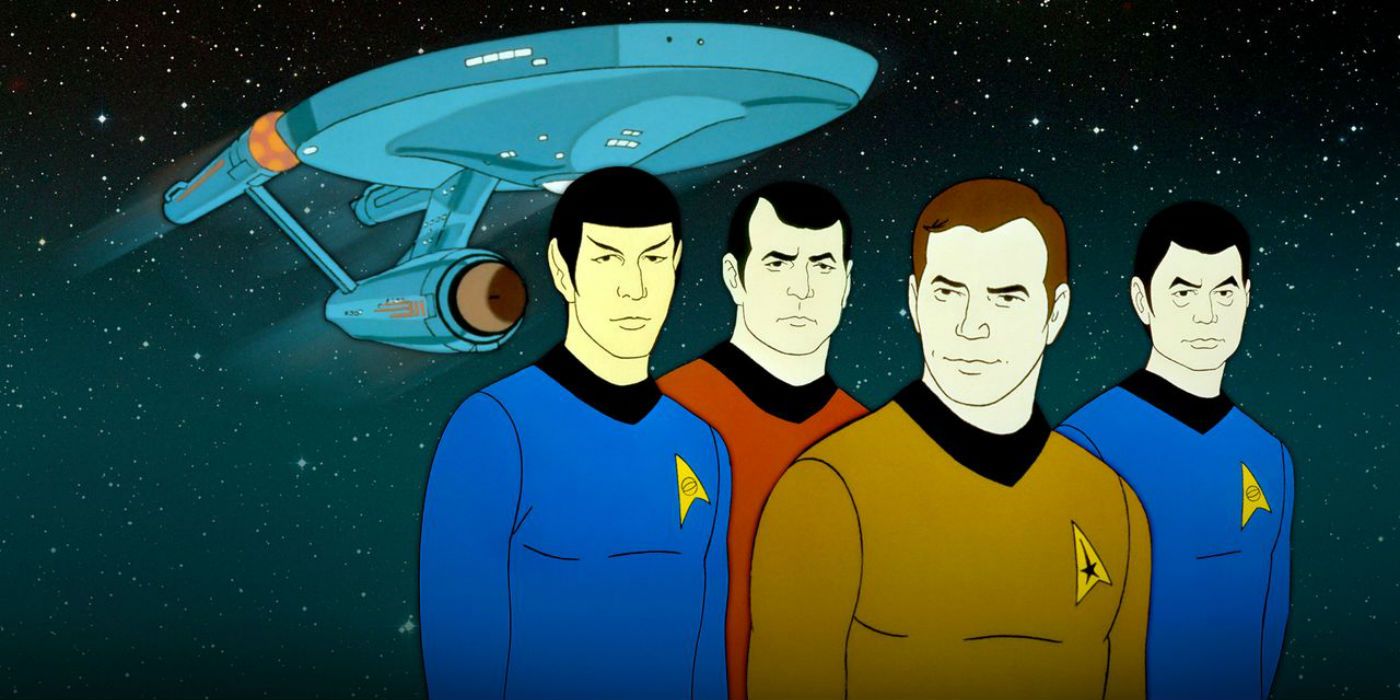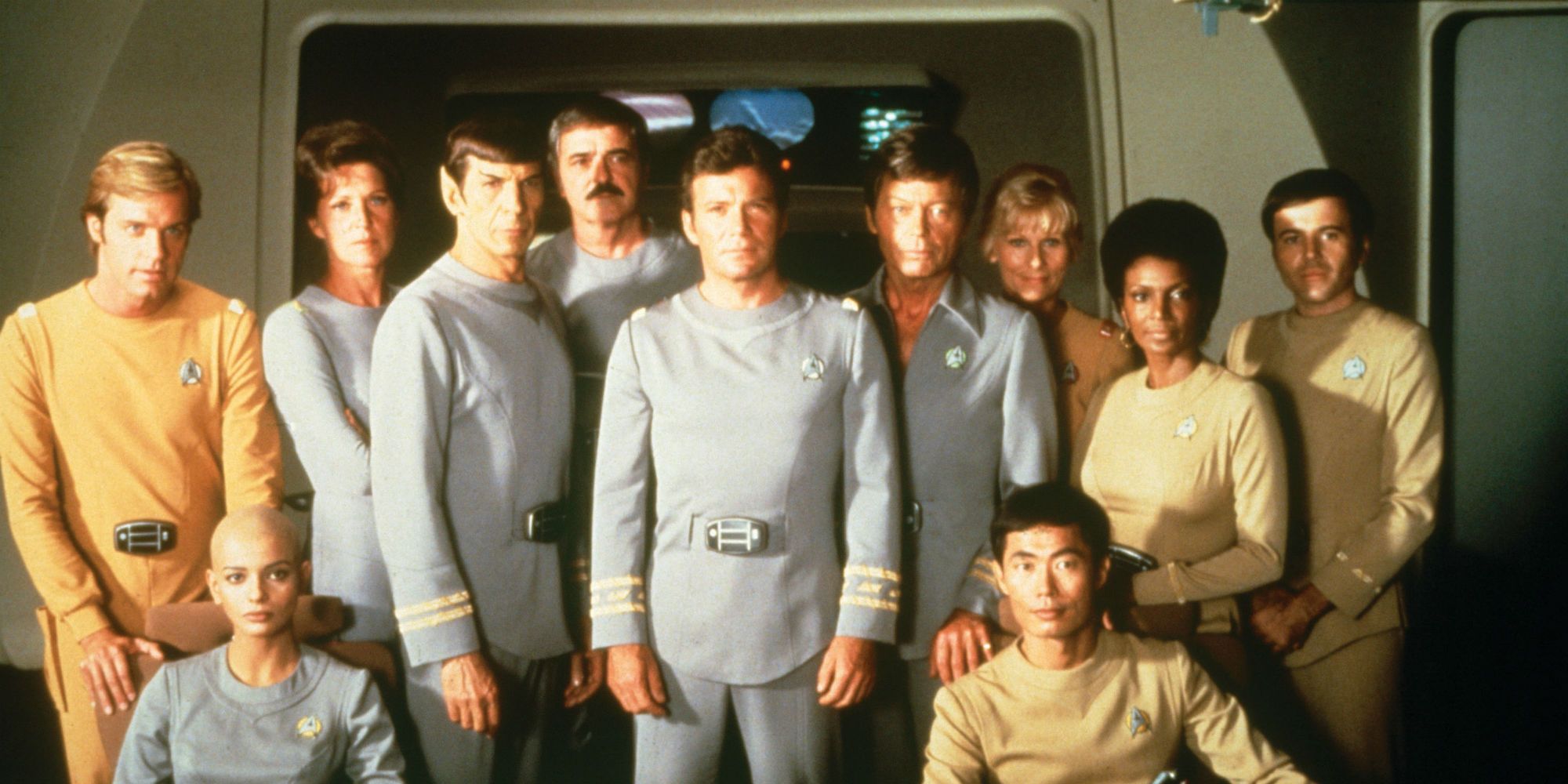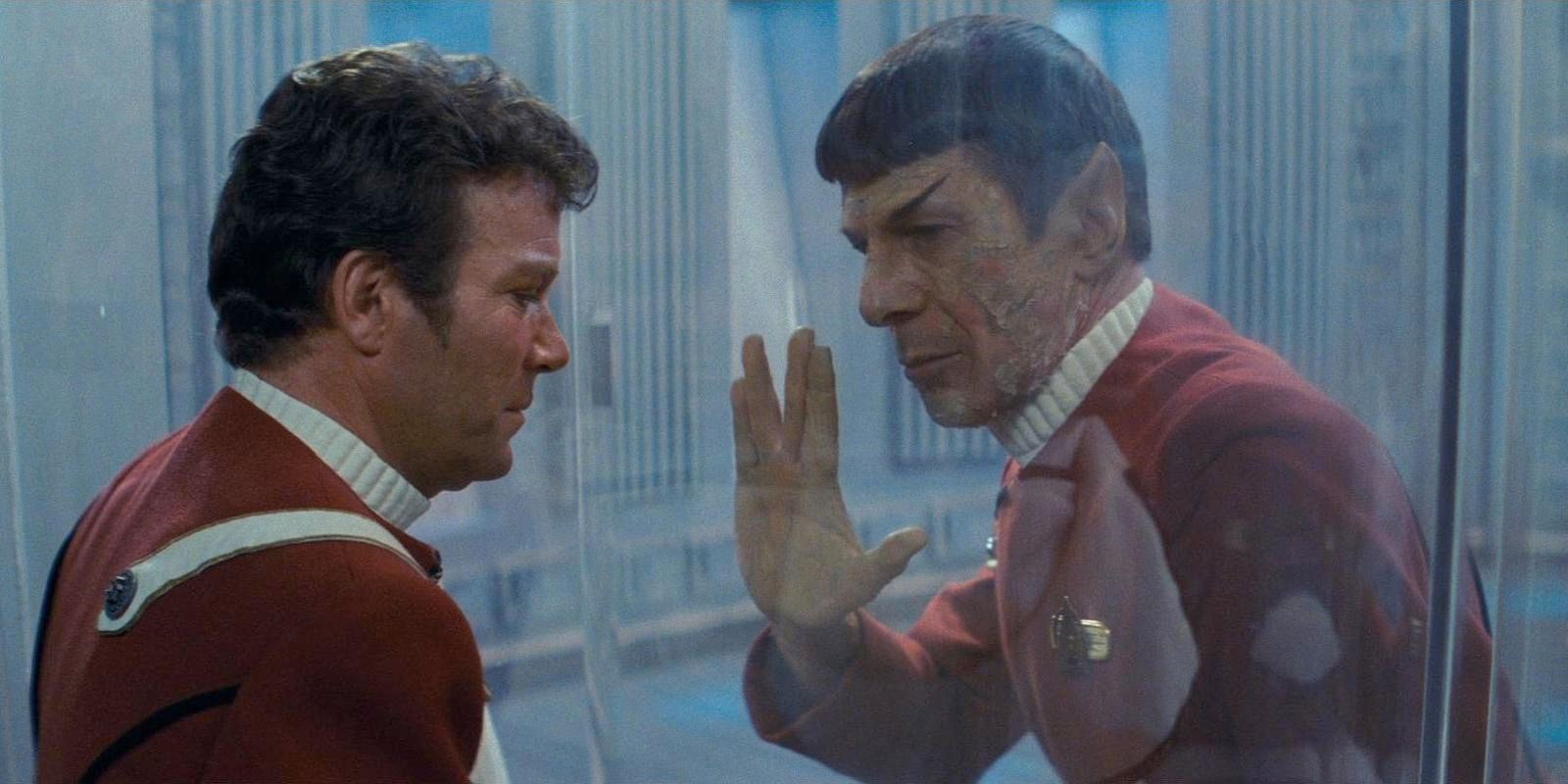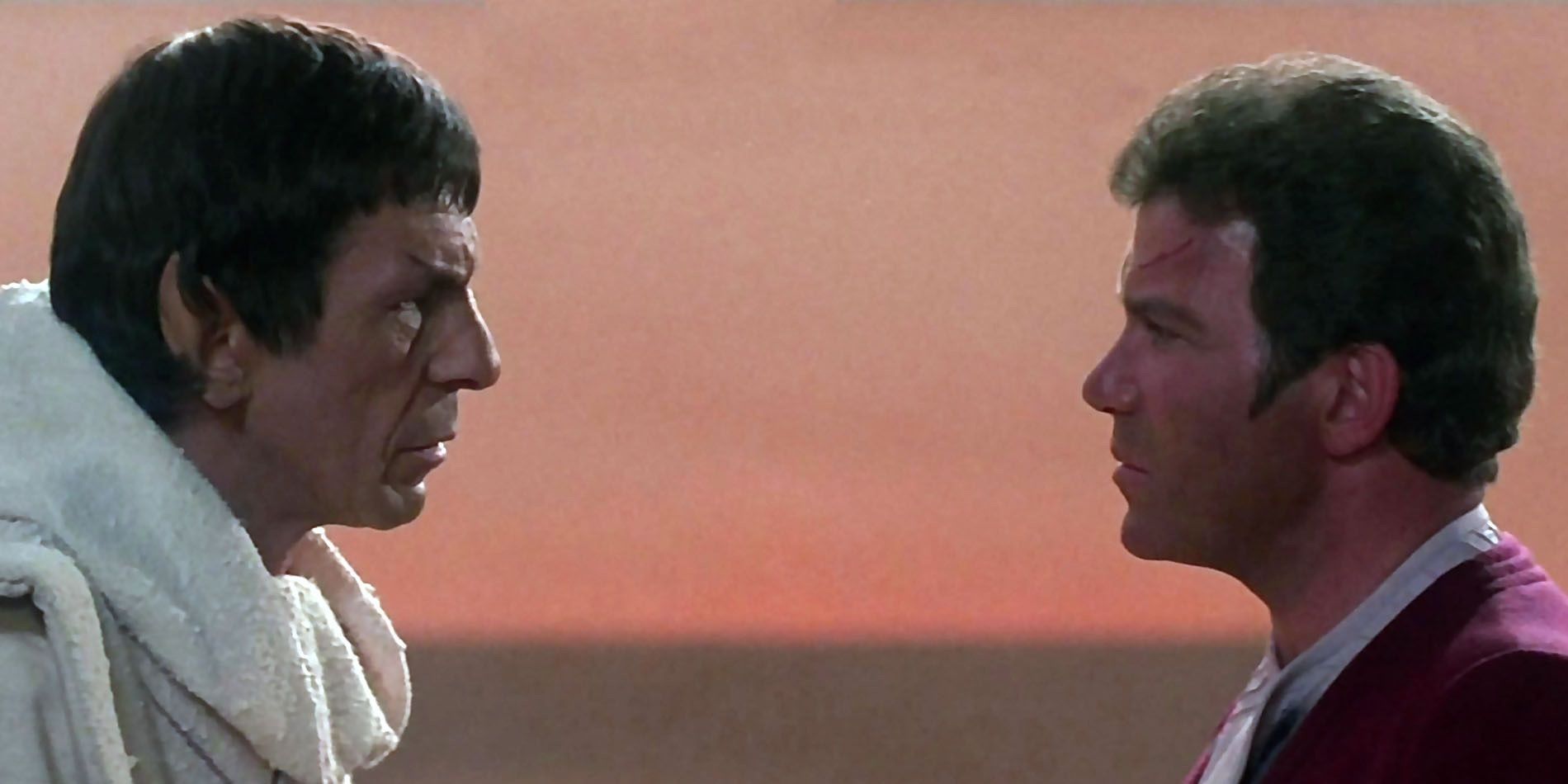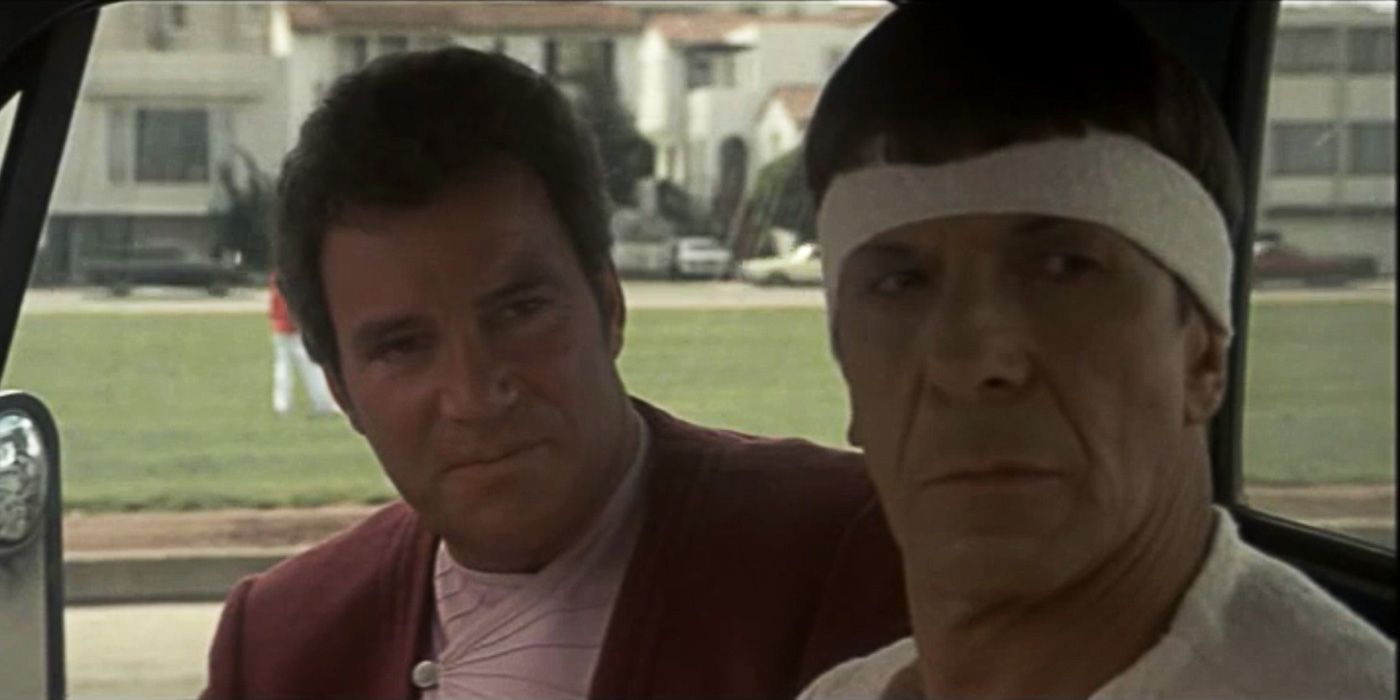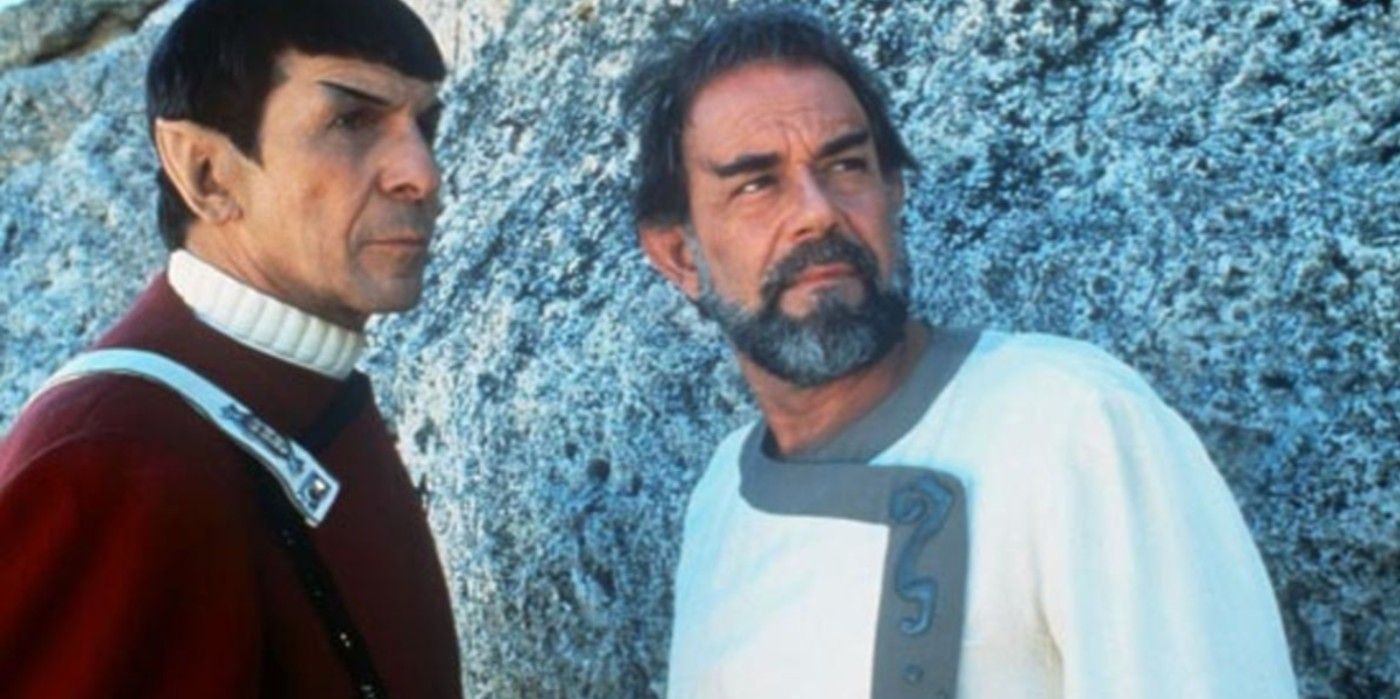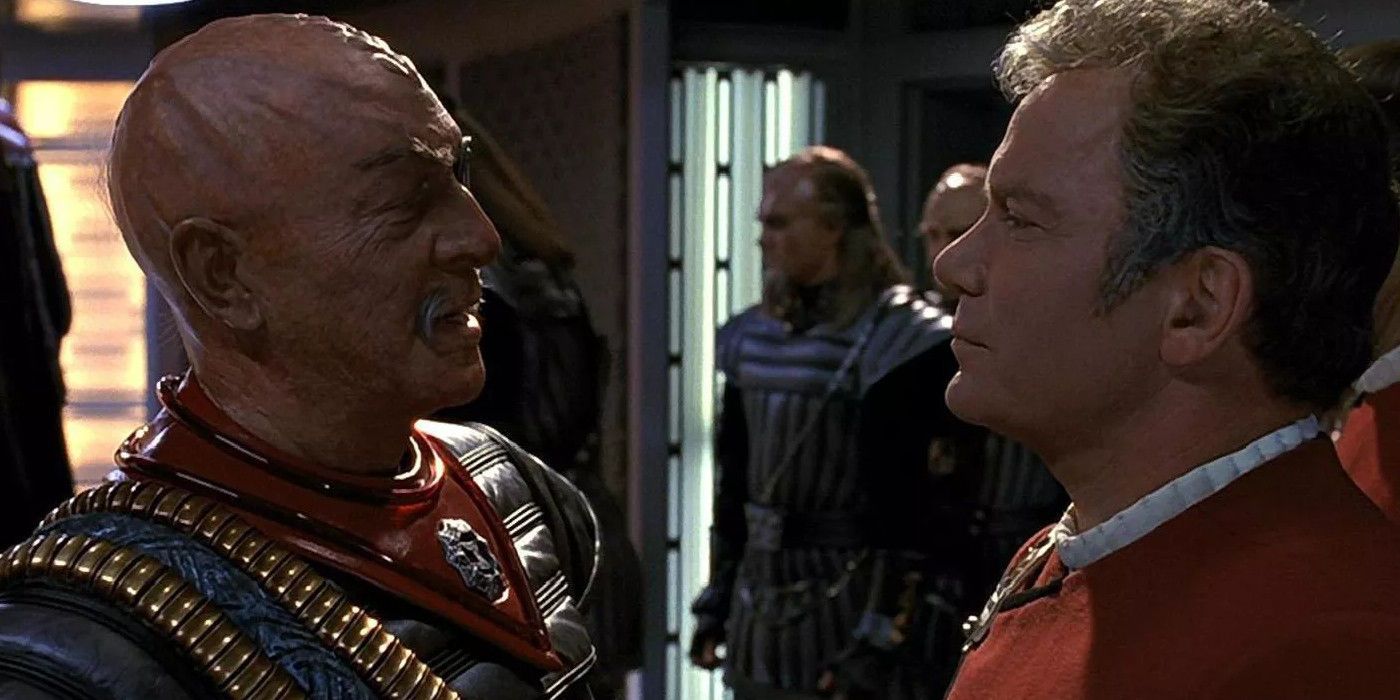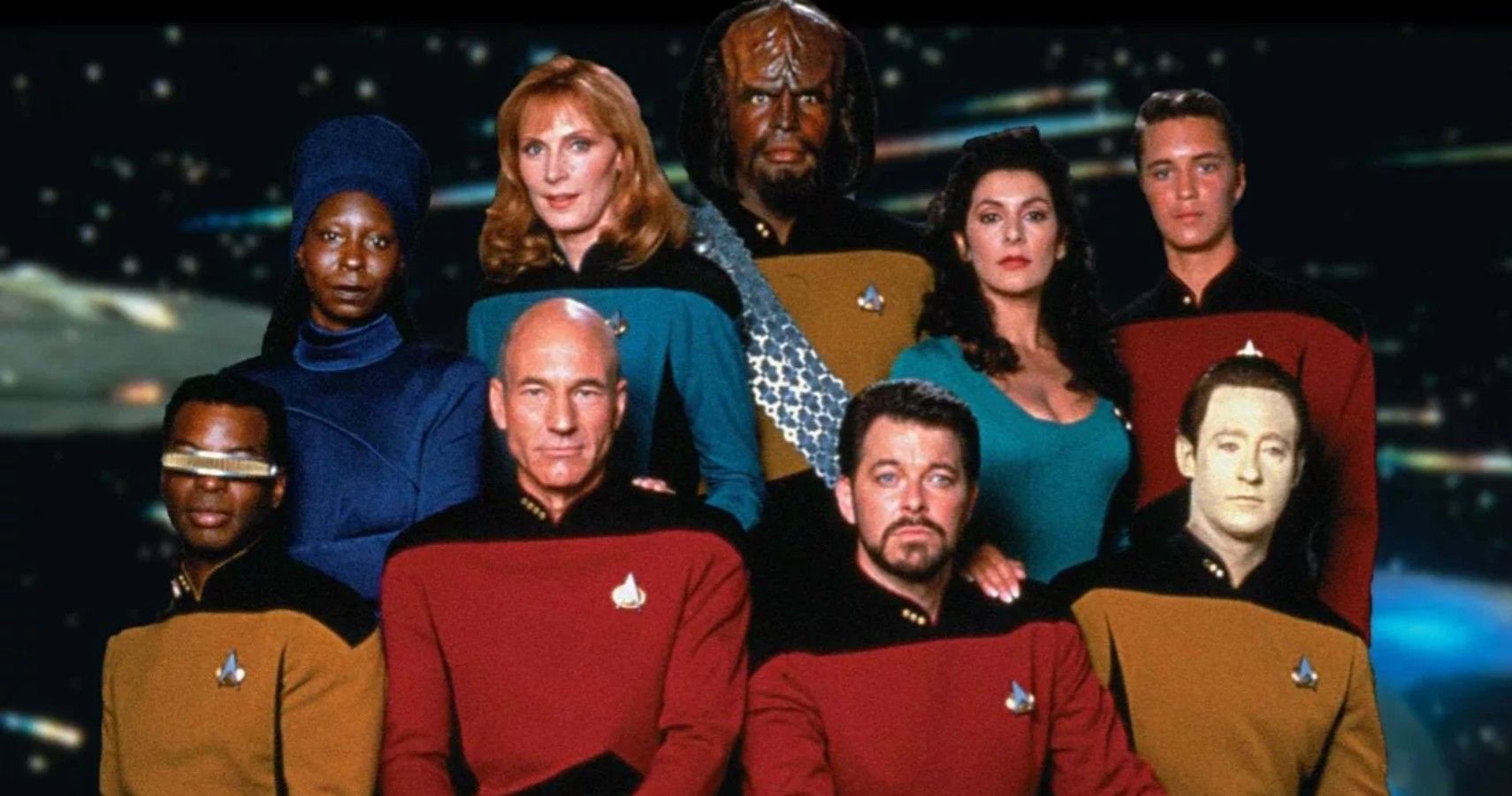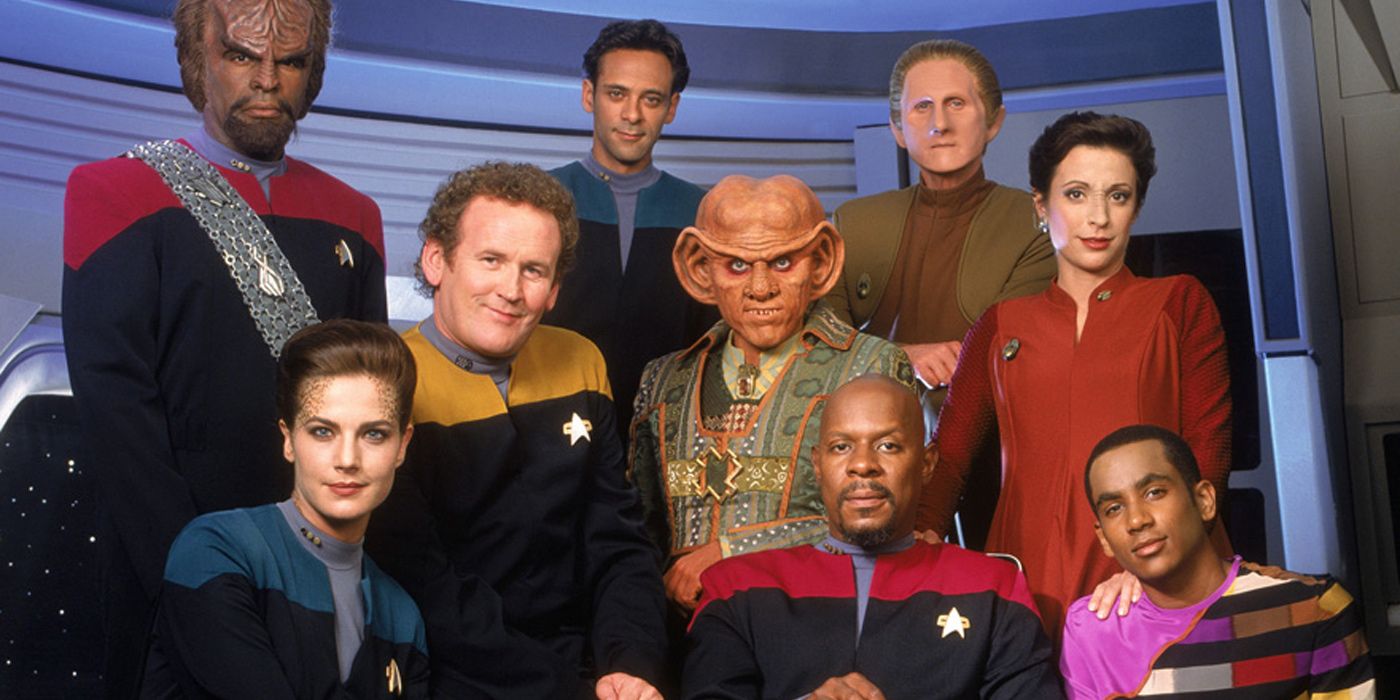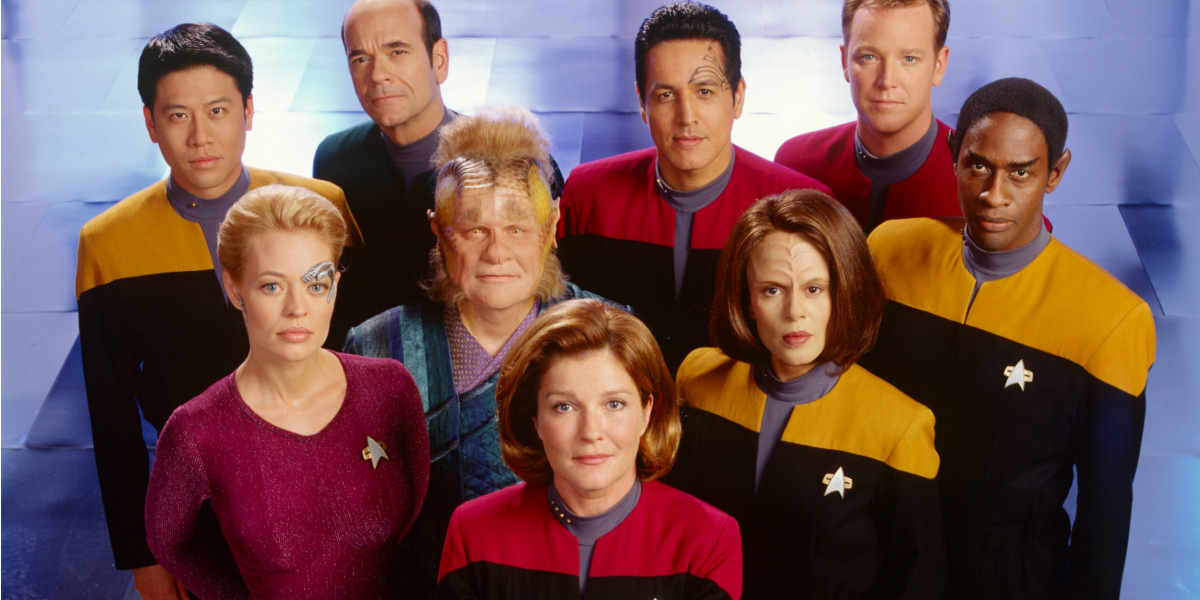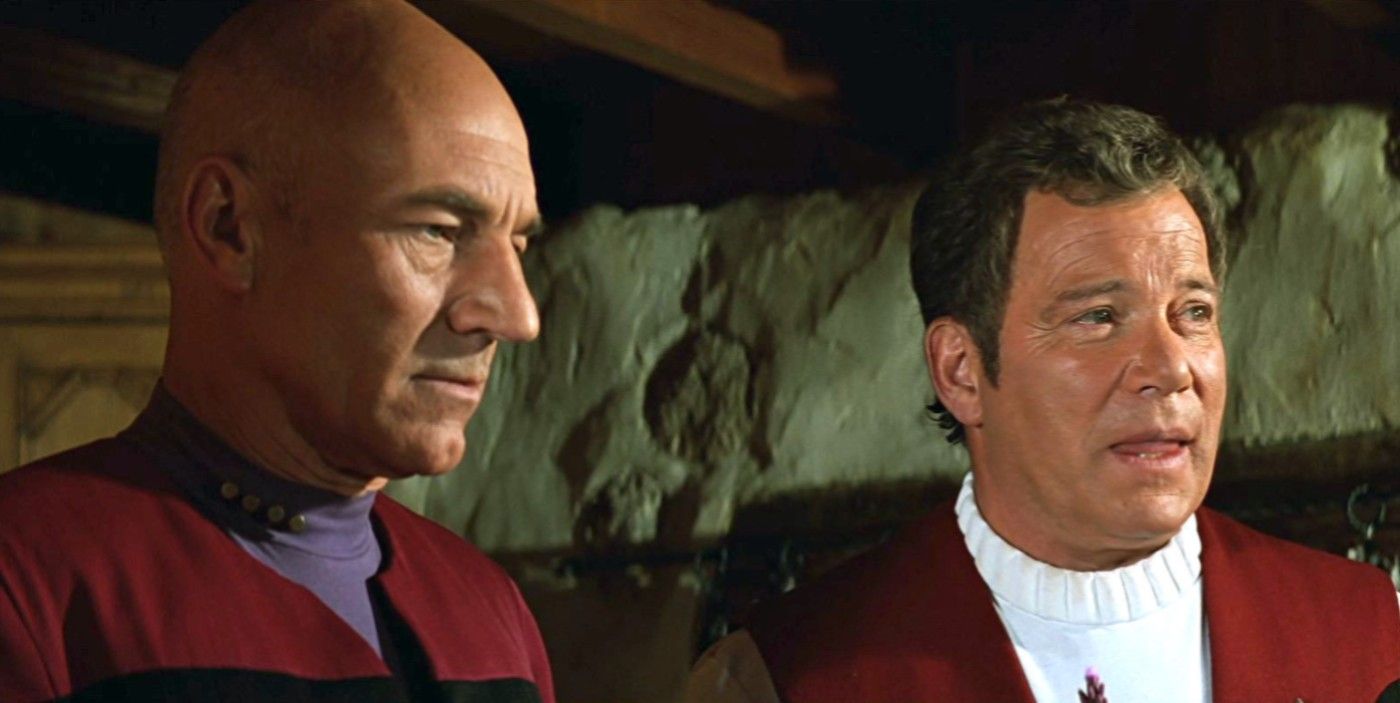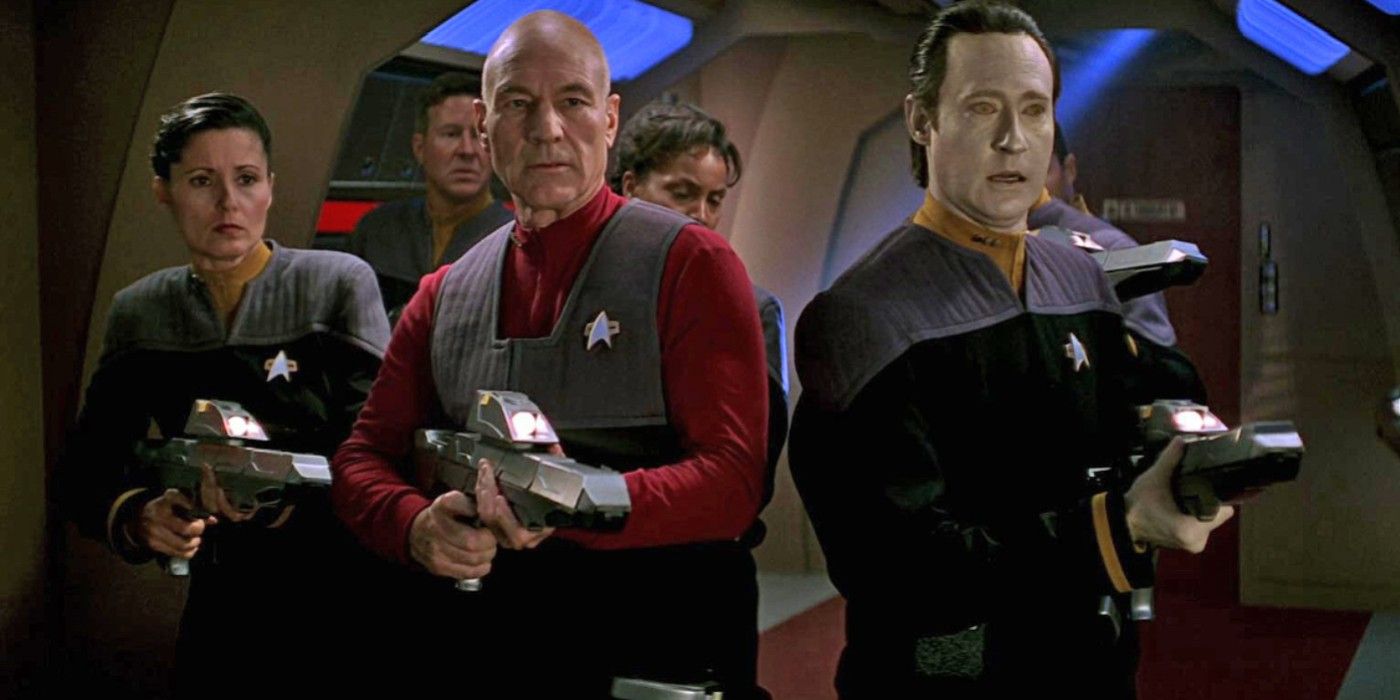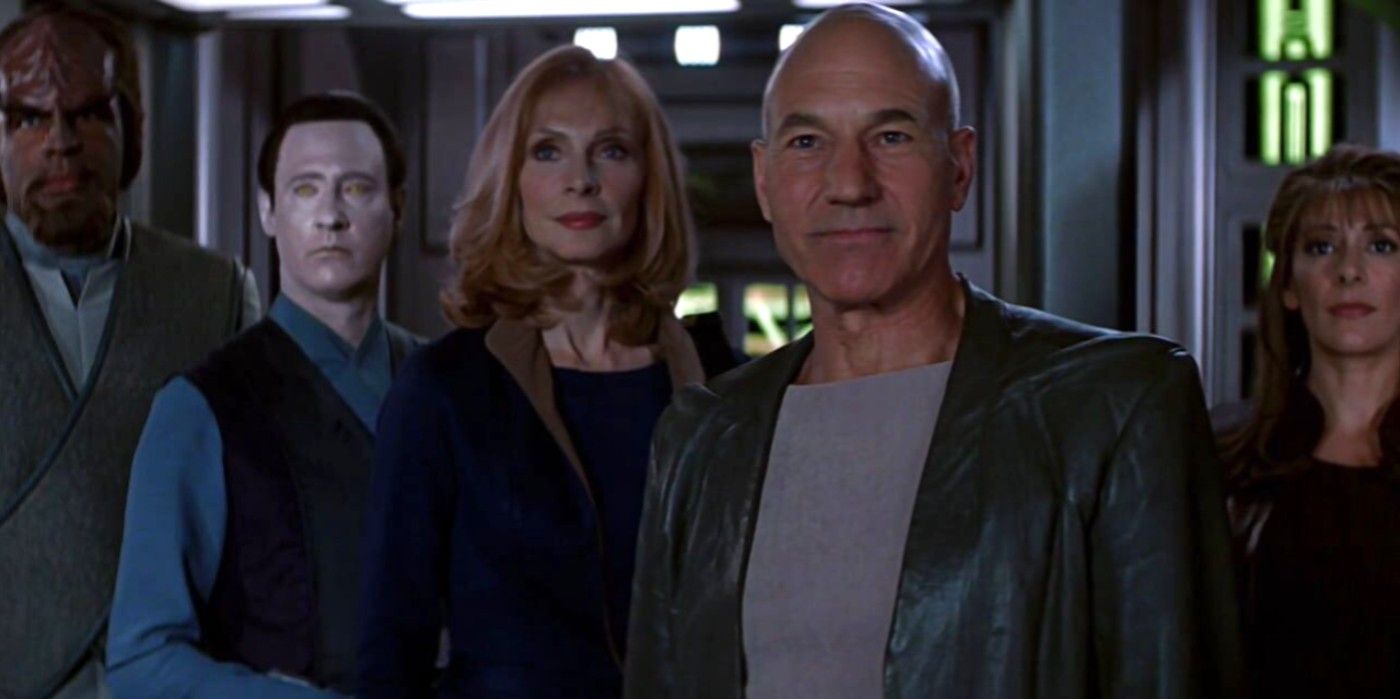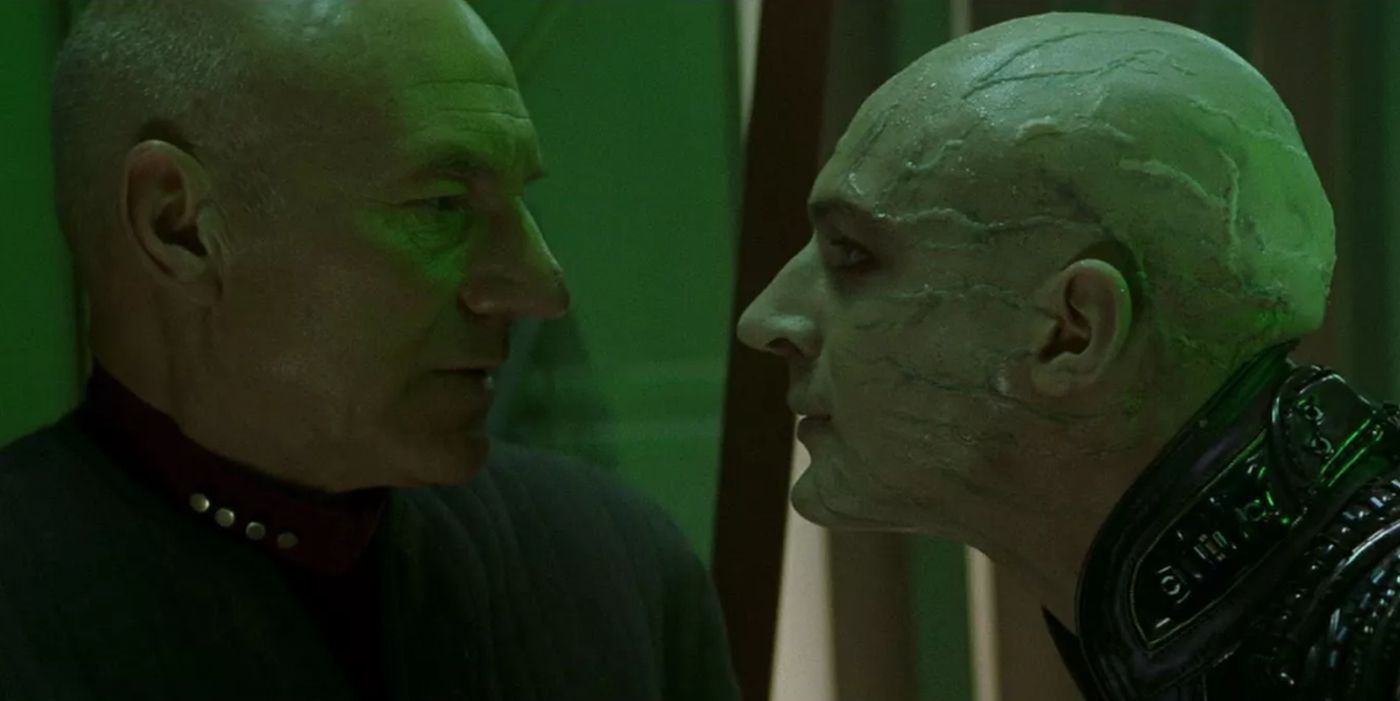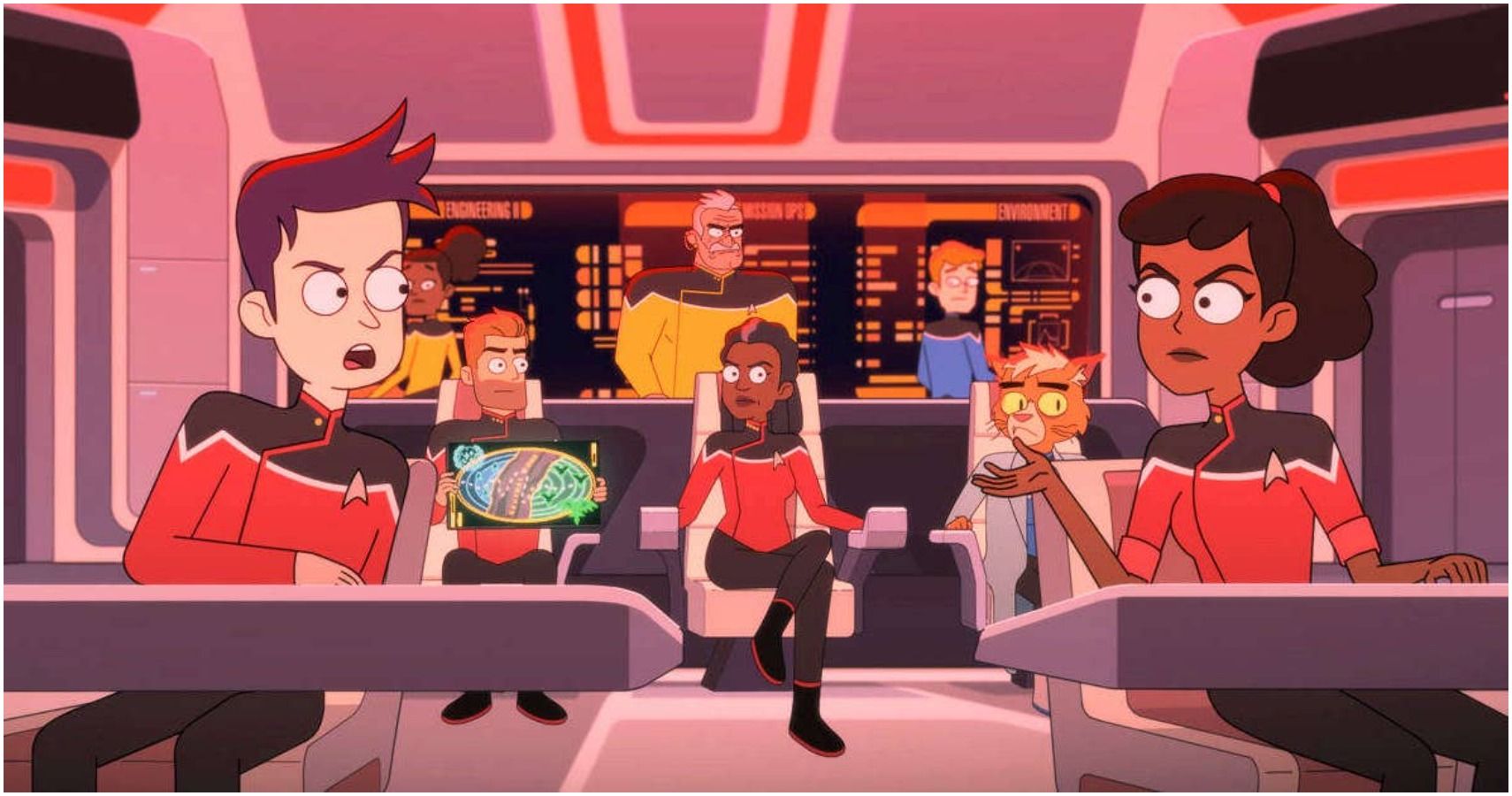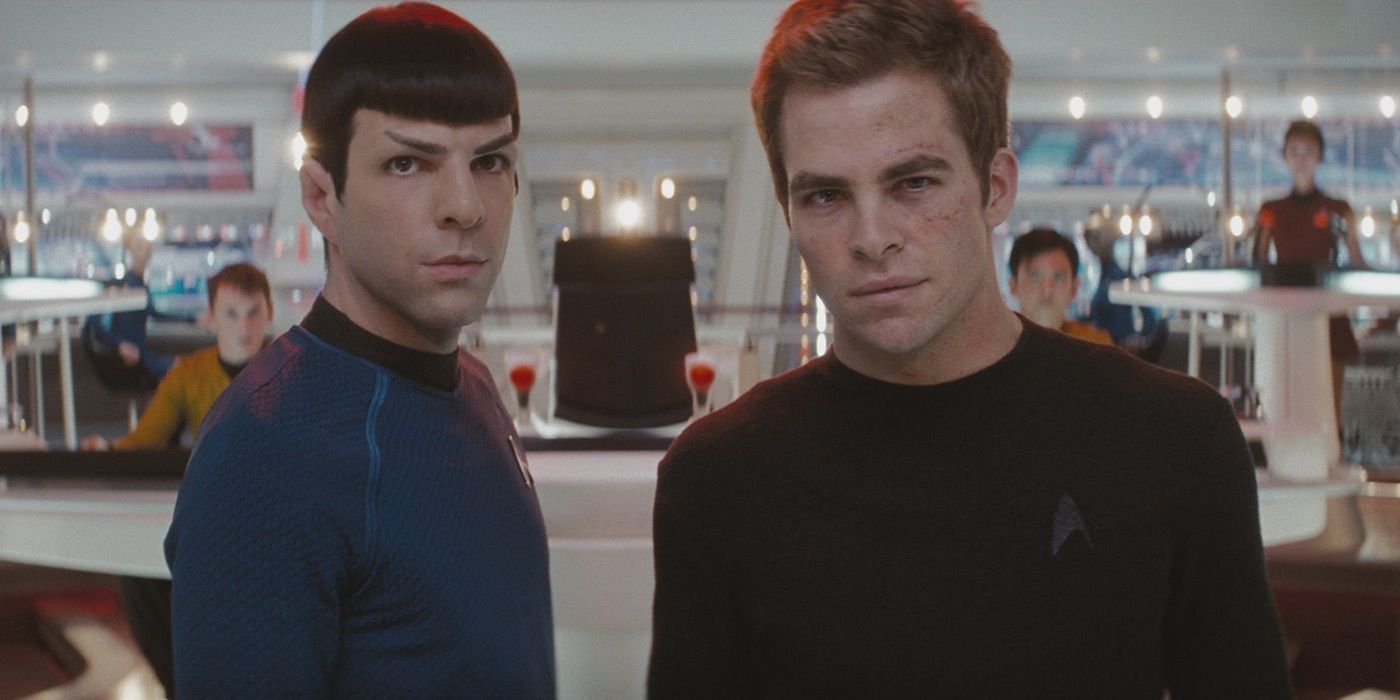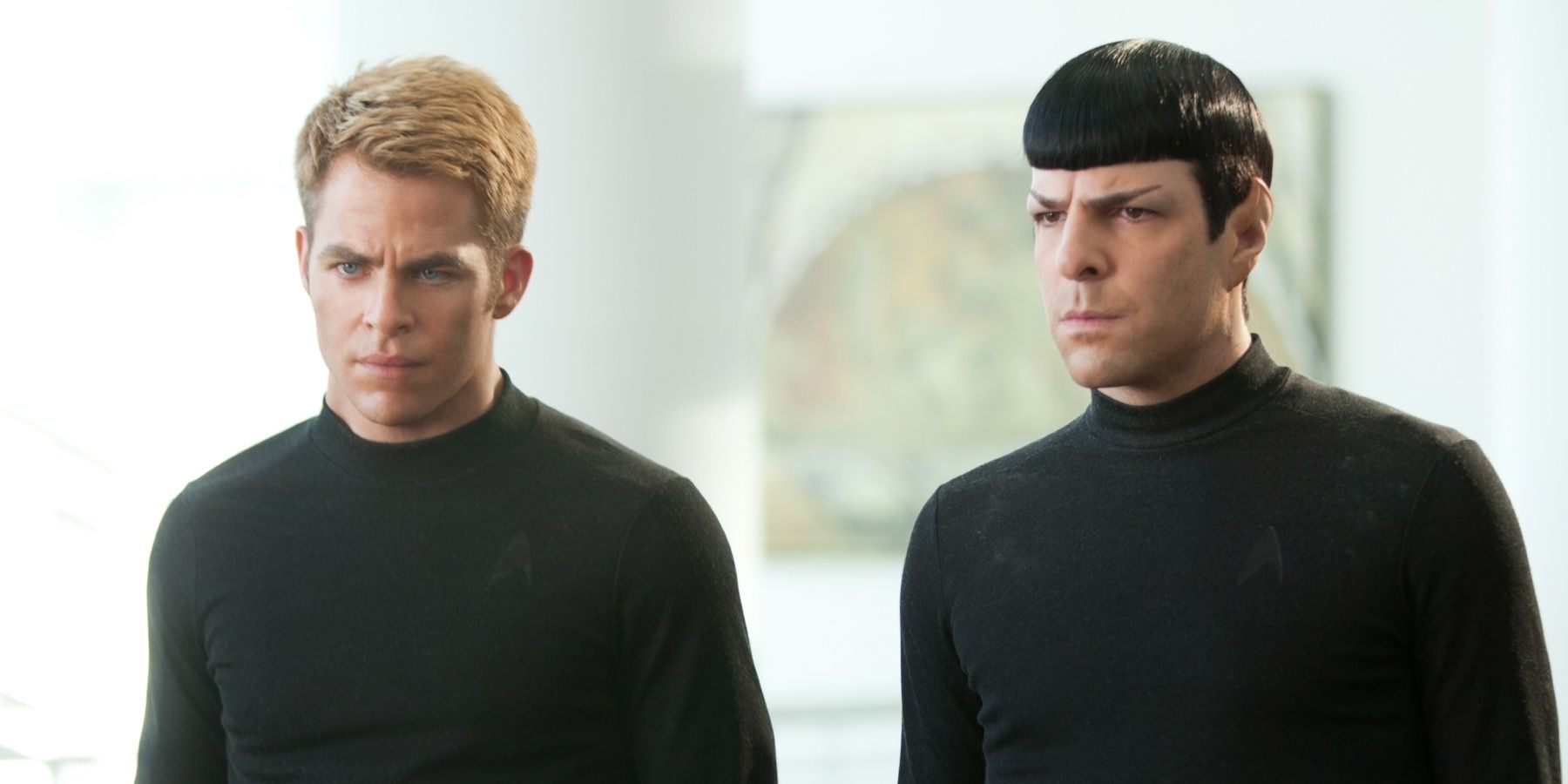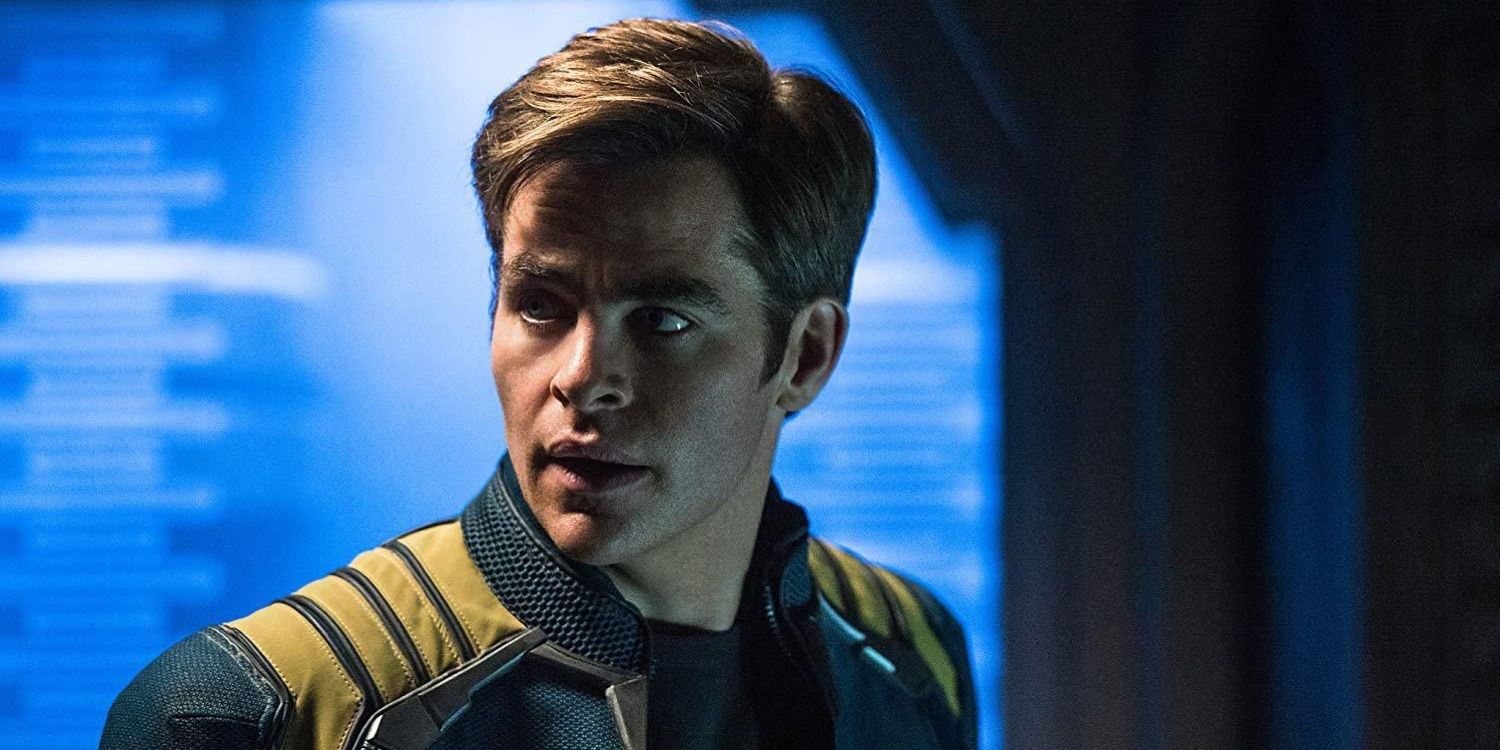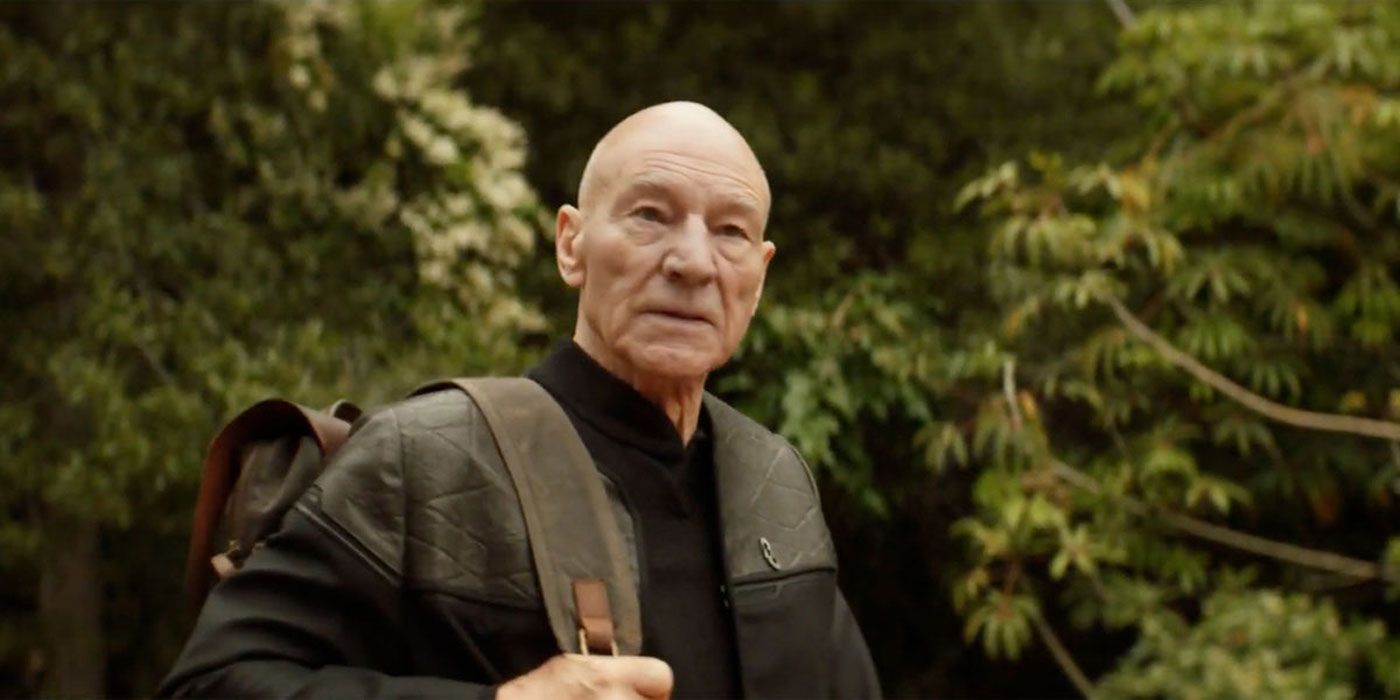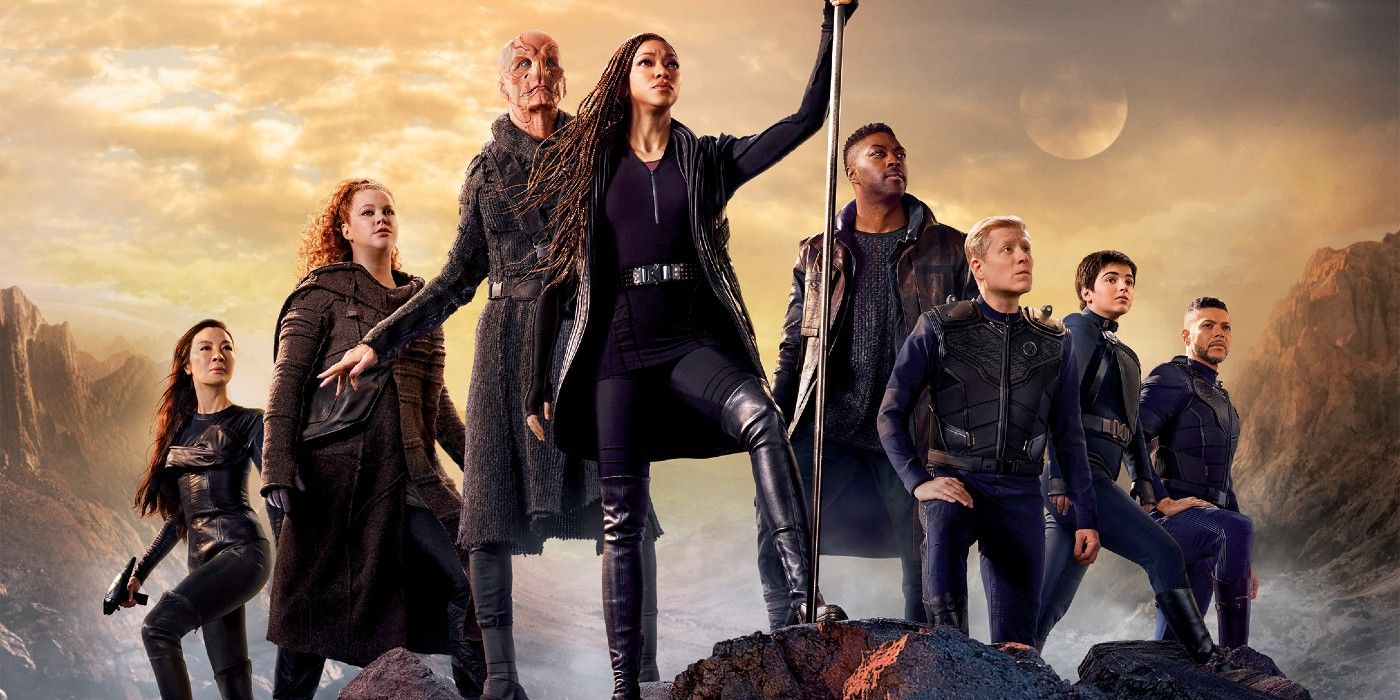Star Trek has been one of the premiere science fiction franchises in the world for over 50 years, but the sprawling timeline can sometimes be intimidating to new viewers, so we're laying out the definitive guide to the final frontier.
Over its half century of existence, Star Trek has rarely told its stories in a straight, chronological line; time travel tropes, alternate realities, and massive jumps into the future are all commonplace. Whether it's the era of Kirk and Spock or Picard and Data, Star Trek's timeline is a rich tapestry of compelling characters and science fiction parables, and it's still going strong.
Here's a definitive look at the important milestones in the Star Trek timeline, across the franchise's many movies and TV shows.
Star Trek: Enterprise (2151-2155)
After Zefram Cochran's warp speed breakthrough and confab with Earth's first alien visitors, the Vulcans, humanity made slow steps toward rebuilding itself after the fallout from World War III, becoming worthy of being a citizen in a larger galactic community. Star Trek: Enterprise chronicled the adventures of Captain Jonathan Archer and the crew of the Enterprise NX-01, the first human ship capable of warp 5.
The show dealt with humanity's growing pains with ostensible allies like the Vulcans and Andorians, as well as the introduction of classic species like the Klingons. The show ended with a bizarre, roundly criticized holodeck flashforward, which saw Archer and friends present at the creation of the Federation in 2161.
Star Trek: Discovery Seasons 1 and 2 (2256-2259)
Star Trek: Discovery begins with a disastrous meeting between Starfleet and the Klingon Empire, which leads to a long, bloody war that nearly cost the Federation its soul. Centering on Commander Micheal Burnham, Discovery deals with the personal prices of war, as well as the themes of redemption and empathy. The first season dealt almost exclusively with the Klingon War, while season 2 took a more thoughtful approach - partially by borrowing the once and future captain of the Enterprise, Christopher Pike. When faced with a homicidal artificial intelligence called Control, the crew of the Discovery realized the only way to save all organic life in the universe would be to jump significantly into the future - but we'll get to that in a bit.
Star Trek: The Original Series (2266-2269)
The USS Enterprise was launched in 2245, under Captain Robert April, before Pike took command somewhere around 2254, which is the year of the show's initial, rejected pilot episode "The Cage." A new pilot - now featuring William Shatner's iconic Captain Kirk and a little more action - was set in 2265, while the first season of Star Trek: The Original Series was largely set in 2266.
The show would take some time travel detours - including the stone cold classic "City On The Edge Of Forever," which saw Kirk and Spock faced with an impossible choice when they find themselves thrown back to the 1930s. But this is the show whose era would define Star Trek for decades - bright colors, multicultural Starfleet crews, and more than a little silliness.
Star Trek: The Animated Series (2269-2270)
While Star Trek: The Original Series was unceremoniously cancelled after its third season, the show would go on to become a phenomenon in syndication. The first hint that Star Trek would outlive its somewhat humble beginnings was Star Trek: The Animated Series, an Emmy winning cartoon that aimed for a family friendly vibe without sacrificing what made The Original Series work.
It's been debated for years whether or not The Animated Series is a proper part of Star Trek canon - franchise creator Gene Roddenberry tended to vacillate on the issue, but current Star Trek head honcho Alex Kurtzman says it is. It even got a couple of brief references in Star Trek: Picard - so we're including it here.
Star Trek: The Motion Picture (2273)
Following a few years as head of Starfleet Command, Admiral James T. Kirk retakes the reins of the newly refitted USS Enterprise to stop a mysterious, sentient cloud from consuming everything in its path, including its eventual final destination - Earth. Spock, now studying on Vulcan to purge himself of all remaining emotion, finds himself in direct contact with the alien entity, which turns out to have more to do with humanity than the crew could ever guess.
The first film in the franchise is a long, cerebral story, with a significantly colder, more serious vibe than The Original Series, taking many of its cues from the classic 2001: A Space Odyssey. It received something of a mixed reaction from audiences, but greater things were just around the corner for Kirk and friends.
Star Trek II: The Wrath of Khan (2285)
Set over a decade after The Motion Picture, Star Trek II: The Wrath of Khan is still widely considered the gold standard of Star Trek films. Admiral Kirk - now many years removed from his salad days on the Enterprise - is enduring something of a midlife crisis on Earth when an enemy from his past returns. Khan Noonien Singh, the superman who menaced the Enterprise in the classic TOS episode "Space Seed," is looking for vengeance against Kirk, and plans to utilize the technology of the Genesis project to continue his destiny of conquest.
After a pitched cat and mouse battle in space, Kirk comes out on top, but at a terrible cost - Spock sacrifices his life to save the Enterprise. Spock's death would define the next two films in the franchise.
Star Trek III: The Search For Spock (2285)
Set immediately after the events of the previous film, The Search For Spock finds Kirk and friends stealing the Enterprise in an effort to save Spock's katra - essentially his soul - after the wily Vulcan transferred it to Dr. McCoy just before his death. The crew would eventually save Spock, but at great price; Kirk would not only lose his adult son, David, to a Klingon attack, but also the Enterprise, destroyed in an effort to trick those same Klingons.
Star Trek IV: The Voyage Home (2286/1986)
As the crew of the late USS Enterprise prepares to leave Vulcan and return to Earth to answer for their crimes, a massive alien ship appears over Earth, causing massive climate disruptions on the planet's surface. In their stolen Klingon vessel, Kirk and Spock are able to determine that the alien ship is trying to contact humpback whales, which were extinct by the 23rd century. They decide that to save Earth, they have to go back in time to retrieve a pair of humpback whales.
The crew travel back to 1986 and have one of their more lighthearted adventures along the way. They're eventually able to retrieve the whales, return to the future and save Earth. For their trouble, all charges against the crew are dropped except one, against only Admiral Kirk, whose "punishment" is demotion to Captain. Kirk and his faithful crew are assigned to a brand new ship - the USS Enterprise NCC-1701-A, and the adventures continue.
Star Trek V: The Final Frontier (2287)
Less than a year out of space dock, the new Enterprise-A is something of a mess, but Kirk and crew are still called into action when a mysterious Vulcan named Sybok takes a group of diplomats hostage, demanding a starship in exchange for their release. Sybok would be revealed as Spock's half-brother who rejected the teachings of Vulcan logic to embrace emotion.
Sybok was able to commandeer the Enterprise and take it to a far away planet he calls Sha Ka Ree, essentially Eden. But the God of Sha Ka Ree proves to be a villainous alien attempting to free itself from an ancient prison. Sybok dies in the ensuing battle, but the alien entity is fought off by an unlikely Klingon assist. Spock mourns his brother, but takes comfort in the family he's made for himself on the Enterprise.
Star Trek VI: The Undiscovered Country (2293)
After a cataclysmic mining accident, the Klingon Empire finds itself in generational peril. The Federation takes the opportunity to open peace negotiations with the warrior race, with Spock volunteering the soon to be retired Enterprise crew for one final mission, much to Captain Kirk's horror. Kirk still blames the Klingons for the death of his son and has trouble separating his personal feelings from his mission. But when the Klingon Emperor is mysteriously killed after meeting with the Enterprise crew, Kirk and McCoy find themselves accused of his murder.
Spock is able to uncover a vast conspiracy within Starfleet and the Klingon Empire - including his hand-chosen successor, Lieutenant Valeris - which is intent on destroying any chance of peace. Kirk is eventually able to put his own prejudice and fear of the future aside, paving the way for the eventual peace that the Klingons and the Federation would enjoy in the 24th century.
Star Trek: The Next Generation (2364-2370)
Taking place a century after the events of The Original Series, Star Trek: The Next Generation was the franchise's great leap forward. Set on the brand new Galaxy class USS Enterprise NCC-1701-D, TNG would follow the adventures of Captain Jean-Luc Picard and his crew of bright eyed overachievers. Produced two decades after TOS, Star Trek: The Next Generation told more sophisticated stories, and thankfully jettisoned some of the overt misogyny from its 1960s predecessor. Fan favorites like Data and Worf became household names in the same manner as Spock and Bones.
Running in syndication for seven seasons, Star Trek: The Next Generation was a bigger and more consistent hit than The Original Series, and solidified Star Trek as an A-list franchise for most of the 1990s.
Star Trek: Deep Space Nine (2369-2375)
Set on a stationary space station, Star Trek: Deep Space Nine would break new ground for the franchise in more ways than one. It featured Avery Brooks as Commander Benjamin Sisko - the first person of color to lead a Star Trek crew, and a young father questioning his place in Starfleet as he takes on this new mission. He would eventually find himself revered as a religious figure by the people of Bajor, a deeply spiritual society that was occupied and enslaved by the fascistic Cardassians.
Deep Space Nine would go to some surprisingly dark places, and its later seasons even focused on the Federation entering a bitter war against the Dominion, a sort of dark mirror of the Federation intent on galactic conquest. While a modest success in its time, it has become a fundamentally important part of the Star Trek universe.
Star Trek: Voyager (2371-2378)
When the brand new USS Voyager - commanded by the steely Captain Kathryn Janeway - finds itself thrown into the Delta quadrant, decades away from home, Star Trek suddenly became a story of survival. More than most series in the franchise, Star Trek: Voyager's crew thought of themselves as a family, enduring years away from the protection of the Federation as they encountered new and old challenges in the Delta quadrant - including the nightmarish cybernetic threat, the Borg.
A former Borg drone, Seven of Nine, would join the series halfway through, and her relationships with Janeway and the ship's suspiciously sentient Emergency Medical Hologram - called simply The Doctor - would come to define the series in its later years.
Star Trek: Generations (2371/2293)
Set immediately after the final season of Star Trek: The Next Generation, this was the first movie in the franchise to feature that show's cast. The film actually begins almost a century earlier with the launch of the Enterprise-B, which happens to be the mission on which Captain Kirk was presumed dead. However, the good captain was actually pulled into a mystical energy ribbon called The Nexus, which was a gateway to a kind of manufactured paradise reality.
A madman named Soran attempts to destroy a star so that he can change the path of The Nexus ribbon and re-enter paradise. He accidentally takes Jean-Luc Picard with him, who brings Kirk back with him to defeat Soren and save untold millions. Kirk dies in the battle, spending his final moments with Picard, who assures him he made a difference. Generations not only sees the end of James Kirk, but the destruction of the iconic Enterprise-D as well. The sleeker, battle ready Enterprise-E would debut in the next film, Star Trek: First Contact.
Star Trek: First Contact (2373/2063)
Captain Jean-Luc Picard and the crew of the USS Enterprise-E must travel back over 300 years from the 24th century to stop the villainous Borg from changing the timeline so that humanity never harnessed warp speed and therefore never made first contact with an alien species, making thm ripe for assimilation. The Earth of this era was still recovering from both the Eugenics Wars a generation earlier and the nuclear fallout from World War III.
After dispatching the Borg, Picard and crew get a rare treat, as they get to be witnesses to the first meeting between Zefram Cochrane - the alcoholic inventor who first harnesses warp speed - and the Vulcans, fittingly humanity's first introduction to life among the stars.
Star Trek: Insurrection (2375)
Reeling from Dominion and Borg attacks, the Federation puts its ideals to the test when it locates a planet with natural healing abilities, something akin to the fountain of youth. Starfleet plans to move its inhabitants off world so they can exploit the planet's inherent powers, to the loud protestations of Picard, who believes Starfleet is betraying its principles.
Eventually Picard would discover that the Federation had inadvertently involved themselves in a blood feud between the Son'a and Ba'ku; after defeating the Son'a's efforts to harvest their homeworld, Picard returned peace to the Ba'ku.
Star Trek: Nemesis (2379)
The (seemingly) final big screen adventure for the cast of TNG, Nemesis saw some big changes for the crew of the Enterprise-E. Commander William Riker and Counselor Deanna Troi got married, with Riker promoted to captain of the USS Titan. The film's main plot revolves around a clone of Picard called Shinzon - played by a young Tom Hardy - who takes control of the Romulan Empire with the help of the Remans, the species that inhabits Romulus' sister planet, Remus.
In a last ditch effort to save both Picard and the Enterprise, Data sacrifices his life, destroying Shinzon's ship as he stands on its bridge. Data's sacrifice would deeply affect Picard, and represent something of a turning point in the captain's life.
Star Trek: Lower Decks (2380)
Set a year after the events of Nemesis, Lower Decks offers a lighthearted take on the final frontier, focusing on the lower ranked crew members of the USS Cerritos. Lower Decks primarily follows Ensigns Brad Boimler and Beckett Mariner as they attend to menial tasks and worry about promotions and making their bosses happy. The show has only had one season so far, but has already established itself as a fun, worthy entry in the Star Trek canon.
Star Trek (2387/Kelvin Timeline 2233/Kelvin Timeline 2258)
This one is tricky. Directed by JJ Abrams, Star Trek was framed as something of a reboot, but was in fact the beginning of an alternate reality story. In 2387, a star explodes and threatens to wipe out billions of people, including the entire planet of Romulus. Spock vows to save as many lives as he can by creating a black hole in the heart of the supernova, but he's too late to save Romulus. A Romulan mining ship, commanded by the vengeful Nero, intercepts Spock after he creates the black hole, and in the altercation both ships are pulled into the black hole and thrown back in time.
Nero arrives first, in the year 2233, where he immediately decimates the USS Kelvin, a Starfleet ship carrying the parents of James Kirk. Kirk's mother survives and gives birth to the future captain, but Kirk's father is killed, altering his future considerably and establishing what would be known as the Kelvin timeline. But fate has a way of intervening, and by 2258 - when Spock finally comes through the wormhole - Kirk is well on his way to becoming the captain we all know and love, despite having lived a very different life.
Star Trek Into Darkness (Kelvin Timeline 2259)
Set a year after the events of Abrams' first alternate reality film, Into Darkness sees the crew of the Enterprise take on a new version of Khan, who has had a massively altered life as well. Rather than being discovered by the Enterprise in 2267, Khan's derelict ship was discovered much earlier by Starfleet's Section 31, essentially the black ops wing of the organization. Section 31 - led by the shady Admiral Marcus - awakens Khan and keeps his follower in cryogenic freeze as the threat by which they can control him.
Things, of course, go very badly, and Kirk and Spock switch roles from The Wrath of Khan as Kirk sacrifices himself to save the Enterprise. With the help of Khan's superhuman blood, however, Kirk is revived, already having defeated one of his most cunning enemies - for now.
Star Trek Beyond (Kelvin Timeline 2262)
About halfway into their five year deep space mission, the crew of the Enterprise find themselves under attack by the mysterious Krall, who has a dangerous drone army at his disposal. Krall actually manages to destroy the Enterprise (yet again) - taking most of the crew hostage in the process. Kirk, who was able to avoid capture along with Chekov and Scotty, eventually frees the Enterprise crew and defeats Krall, who turns out to be a former Starfleet officer who feels the Federation failed him. Beyond is a fun, exciting entry in the franchise, and if it is indeed the final installment in the Kelvin timeline, it's a great way to go out.
Star Trek: Picard (2399)
Set 20 years after the events of Star Trek: Nemesis, Star Trek: Picard finds its titular character still deeply affected by Data's death, as well as the destruction of Romulus by the supernova. A mysterious young woman named Dahj - with an unexpected connection to Data - darkens Picard's doorway, on the run from Romulan agents, and the good captain finds himself back in action once again.
The show would also reintroduce fan favorites like Riker and Troi, as well as Voyager's Seven of Nine, who has been changed drastically by the intervening years. Star Trek: Picard is the first entry in the franchise since Nemesis that moves the primary timeline forward, and closes out the 24th century in shocking, rewarding ways.
Star Trek: Discovery Season 3 (3188-3189)
After jumping into the future to stop the rogue artificial intelligence Control from destroying all organic life in the galaxy, Michael Burnham and the USS Discovery find themselves in an unfamiliar era. The Federation - and interstellar space travel in general - were ravaged by an event called The Burn, which happened about a hundred years prior to Discovery's arrival. The Burn was the day that almost all dilithium - the energy source that powers all warp engines - detonated, destroying most starships in service and massively changing the galactic power structure.
It's yet to be seen how the Discovery will cope in this new world, but it seems likely they'll bring the hope and progressivism inherent in the best of Star Trek with them into this dark new age.

